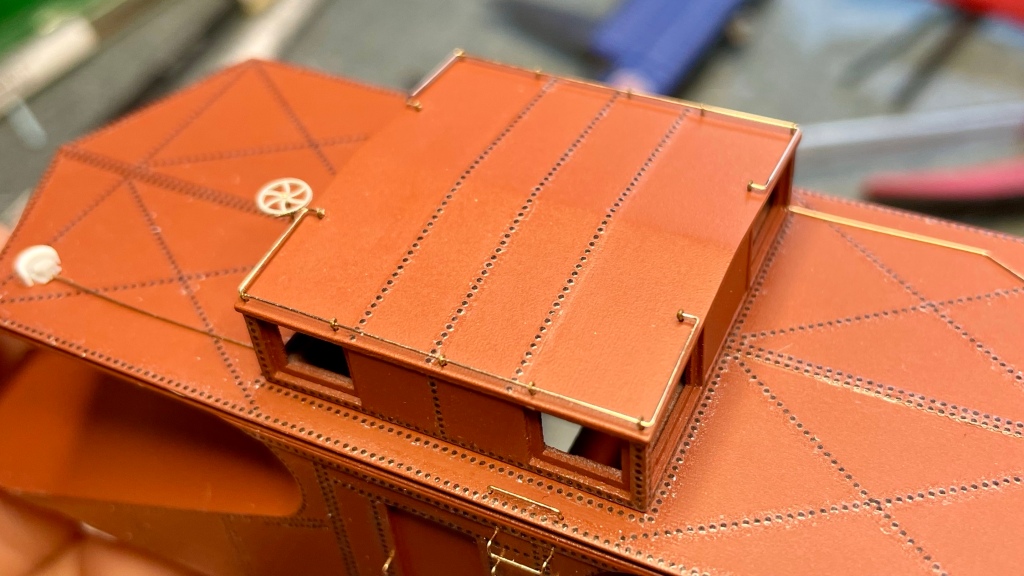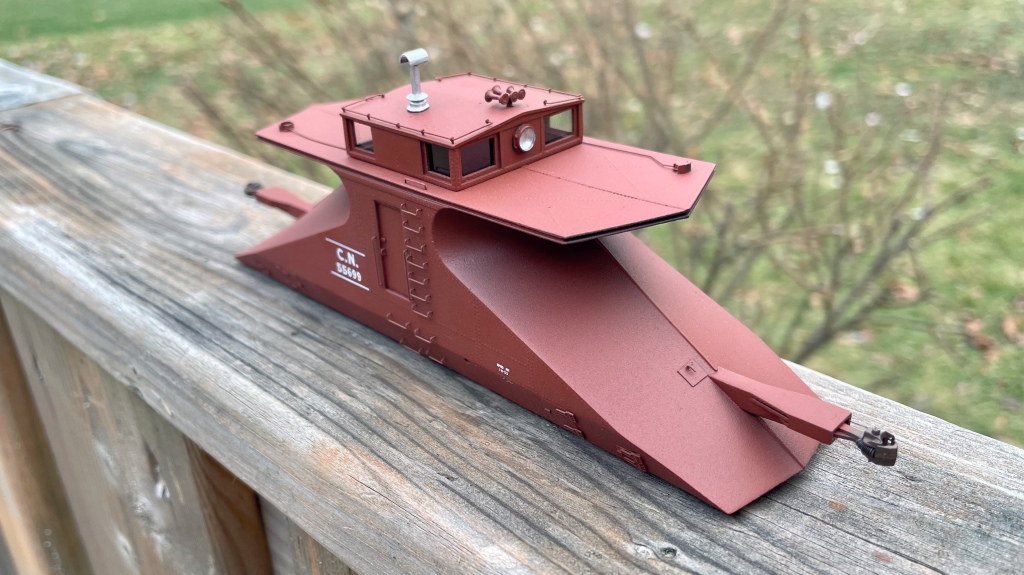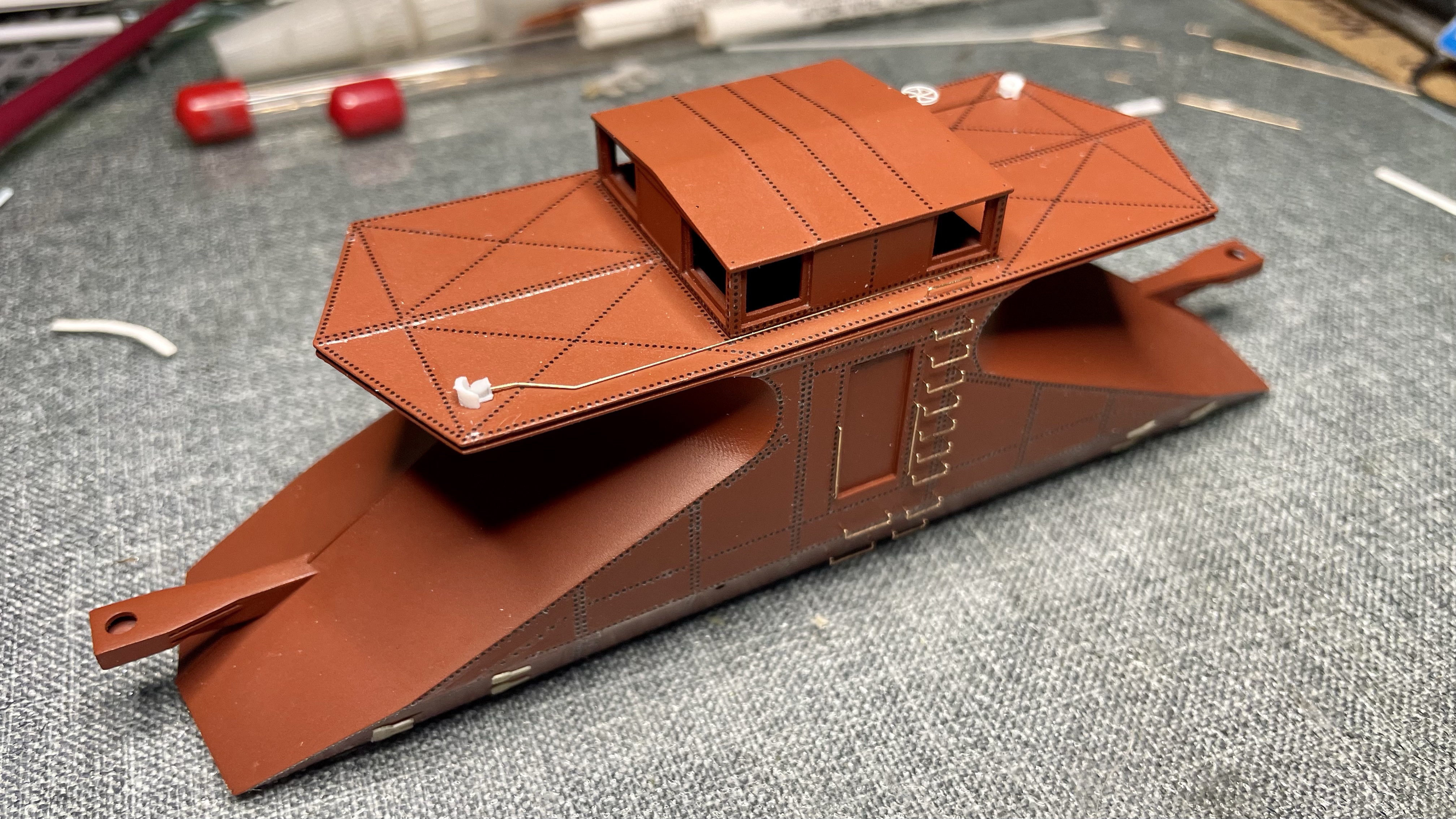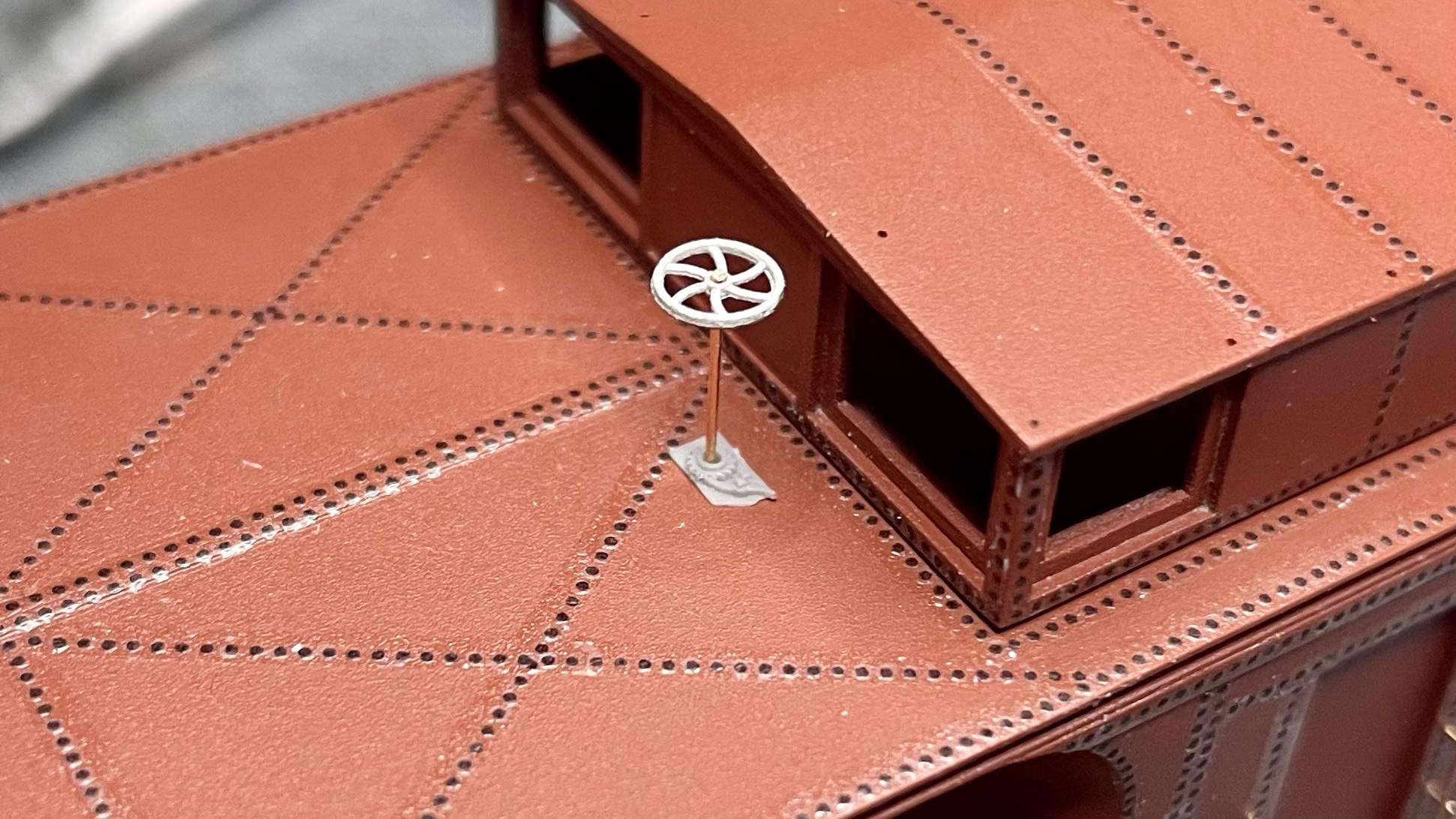
Merry Christmas, everybody. I hope all of my followers were able to celebrate generally to at least some degree. Mine was low-key, which is the norm for me anyway.
My Christmas Day miracle was applying the window glazing to this Eastern Road Model’s Double-Ended Transcona Shop Snowplow just before midnight and finally being able to call it finished. I was not finished before Christmas as I had set out in my last post, but on Christmas nonetheless. I’ll take it.
To continue my previous post, with most of the work on the plow’s body completed, I turned my focus to the cupola.

The first thing I tackled was the large grab irons around the perimeter of the cupola roof. I thought this would be a lot more fiddly than it turned out to be, and it only took about 20 minutes. I used Yarmouth Model Works photo-etched eye bolts and .010″ Tichy PB wire for the grabs themselves with pieces of styrene strip between the grab and cupola roof to provide a uniform clearance while gluing them into place.
Next, I added the stove stack, horn and headlights.

The stove stack was modified to be of the coal-burning variety by using a piece of 1/8″ styrene tube cut in half. It is a bit oversized, and I may replace it with brass at some point down the road, but not now.
The horn required only a simple hole, but the headlights were a little more complicated. The Pyle headlight was a Detail Associates part, and I glued the full headlight to a larger piece of styrene to keep it in place, while I used a razor saw in a mitre box to cut only the front of the headlight off, which was then glued to the cupola.
Next, couplers were installed. I used Kadee scale-head couplers with a short shank. I filed around the base and the top and bottom of the coupler shank (where the whiskers attach) to allow more freedom of movement in the box. I then painted the couplers and installed them using a piece of 1/8″ styrene tubing to fill the hole in the coupler box and keep the couplers in place. I used a tiny drop of CA to adhere the tube into the hole, let it set, and then painted Mr. Surfacer 500 on and around the tube before filing it all flat.

I taped off the couplers and then gave the boxes another quick shot of primer and let them dry.
Before painting the model, an under-frame for the weights and trucks to ride on was required. Using CAD and the measurements provided in the kit’s instructions, I drew the under-frame and cut it out of .040″ styrene mechanically with a Cricut Maker. I modified Tichy body bolsters to be only 1/8″ high from the under-frame and cut the ends off to compensate for the now lower swing of the trucks. These plows ran super low to the rails, which creates additional considerations when modelling them.
While looking for truck bolsters in my spare parts, I found a full under-frame from a Tichy flat car kit. I decided that although it wouldn’t necessarily be accurate (the plows did retain their K-brakes for their entire service life, however), it would be a fun touch, so I added it to the blank under-frame.

The prototype used special arch-bar trucks with a 4’2″ wheelbase. The closest I could find were Tahoe Model Works’ 5-foot wheelbase arch bar trucks (TMW-111/211). To match the prototype, I used Intermountain 28″ diameter replacement wheelsets. I threaded the screw-bosses in the 3D printed part of the bottom of the plow-body and then test fit the underframe to the plow.
At this point, it was time to paint. I used my usual mix of Vallejo paints for the body and cupola to get CN boxcar red. The inside of the cupola is painted a sea-foam green, while the seats were painted gull grey with black cushions. The stove-stack was painted aluminum, and the interior of the headlight housing was painted with glossy silver. A coat of gloss was applied with Future floor wax, and I set the model to dry for a few days before applying decals.

The decals were applied using scraps of leftover Black Cat Decal boxcar sets. Using prototype photos of plows that were kept captive to PEI in the mid-1950s, I determined that most plows at this time only had road numbers and bearing repack dates, so the plow reflects that.

After painting and decals, all that was left was to install the window glazing inside the cupola. I used .005″ clear styrene by Evergreen for this, with Micro Krystal Klear to adhere it to the inside of the cupola.

All in all, I enjoyed this kit, but it was not for the faint of heart or easily frustrated. I’d give anybody who attempts this build the following advice: you’ve already spent a lot of money on this kit, don’t cheap out and use the Micromark rivet decals. The Archer rivets, in my experience, look much nicer. In retrospect, if I had to build the model again, I would use them instead of the Micromark decals. That’s not to say the Micromark decals look bad; they could just look better, is all. Lesson learned.
Calvin
PS: Your very own Transcona Shops Double-plow kit can still be purchased. Body here and cupola here. I have no connection to Eastern Road Models and make no guarantees of their products or the service Shapeways provides.
PPS: The next project is brought to you by the letter “S” and the number “64”…







